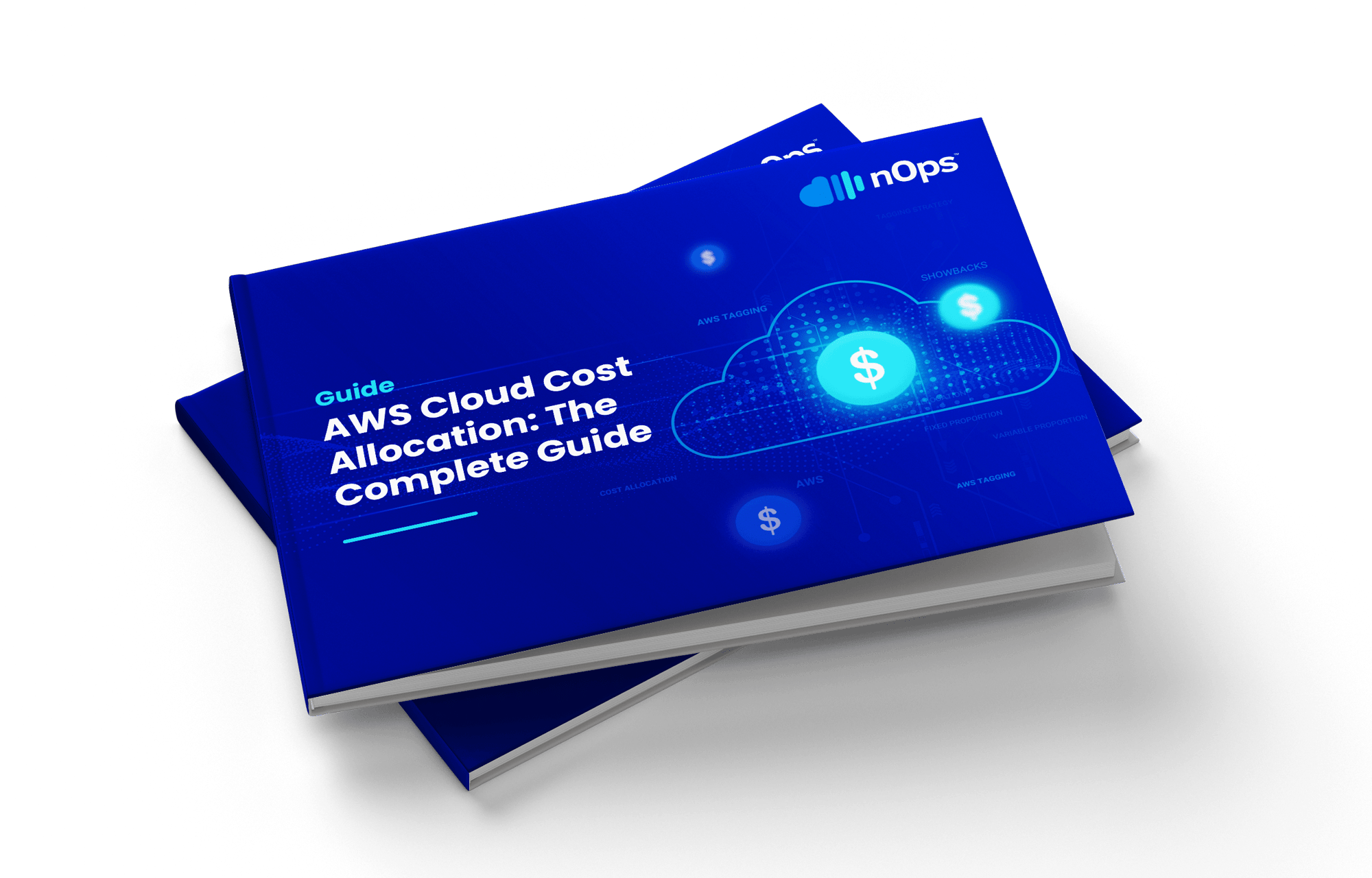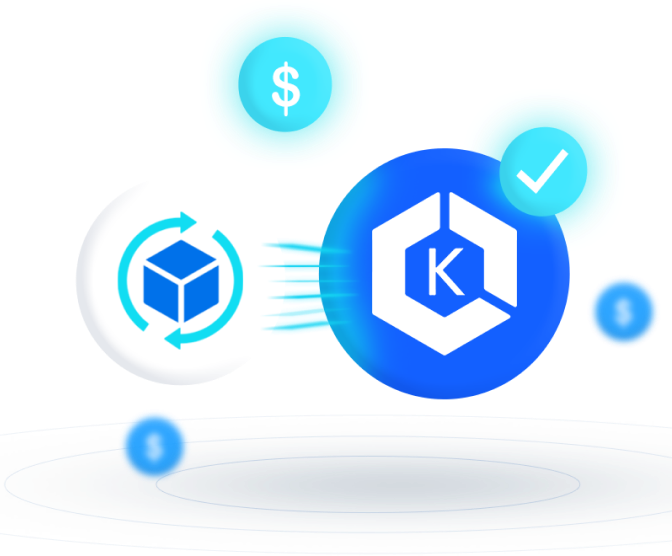Understanding your cloud costs has become increasingly complex, particularly within high-growth, cloud-native containerized environments. And finding the right Kubernetes cost management platform can be challenging, because each solution has a different set of features, advantages and suitable use cases.
Kubecost has emerged as a popular Kubernetes solutions for getting detailed visibility and insights into your cloud costs, but it has some limitations – in this article, we’ll deconstruct all of the industry-leading Kubernetes cost management solutions currently available on the market, so you can evaluate the tool that might be right for your organization’s requirements.
What Is Kubecost?
Kubecost is a tool designed to provide real-time visibility and control over Kubernetes spending. It is an open-source platform tightly integrated with open-source cloud-native projects like Kubernetes and Prometheus.
Its core features include Kubernetes cost allocation across all native Kubernetes concepts (pod, container, node, namespace…) as well as unified cloud cost monitoring across various platforms and deployment options (AWS, Azure, Google, on-premises) with real-time alerts, reporting and cost optimization recommendations.
While Kubecost provides robust tools for cost analysis and management within Kubernetes clusters, it doesn’t do everything. In particular, Kubecost has two main limitations:
- No automated cost optimization tools. Kubecost is great for understanding your Kubernetes costs, but it’s not intended to be a full cost optimization platform. That means unless you invest in another tool, implementing cost-saving measures still requires time-consuming manual intervention.
- Limited to Kubernetes costs. Kubecost gives you visibility into your Kubernetes clusters. However, these insights aren’t integrated with the rest of your cloud spend. That makes it difficult and complicated to reconcile costs with your overall engineering budget and AWS bill. Plus, you’ll need additional tools to gain visibility into your non-Kubernetes resources, leading to increased management overhead and potential inconsistencies in cost data.
Top Kubecost Alternatives
#1. nOps
Container-Level Cost Visibility and Insights for Kubernetes
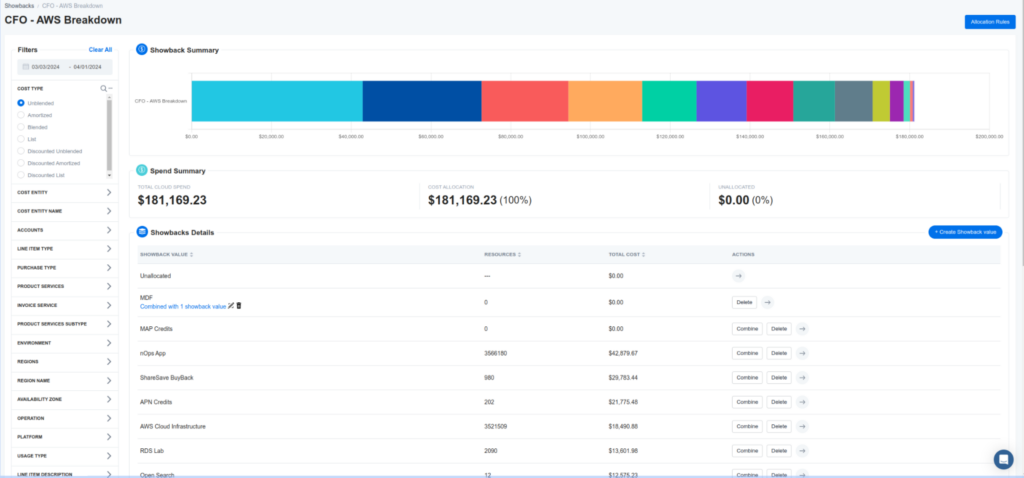
Find Waste in Any Pod, Node or Container

Cost-Optimized Provisioning
Analyze Your Resource Utilization Efficiency
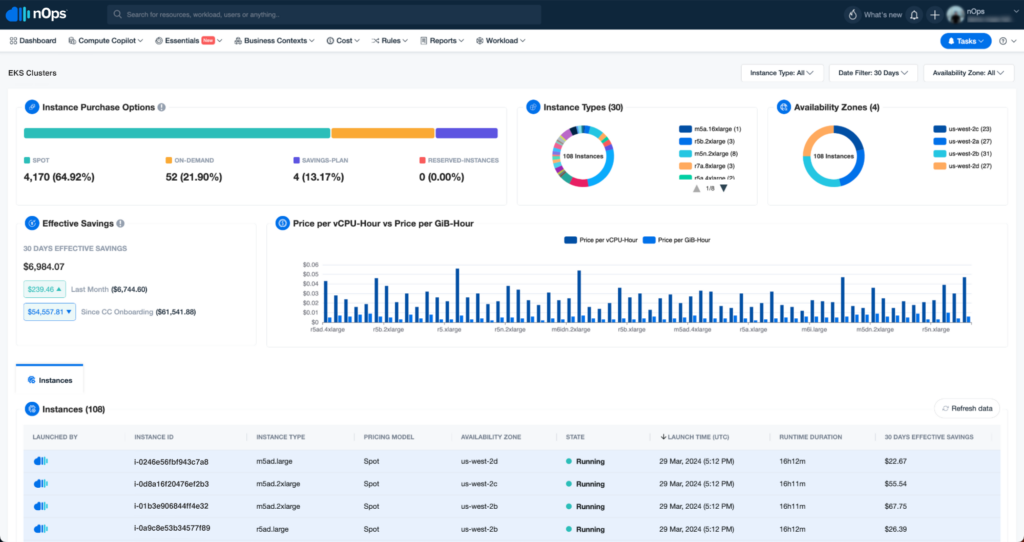
Navigating the AWS console to gather comprehensive information about your cloud resources often requires clicks and calculations for potentially hundreds or thousands of clusters. The nOps dashboard consolidates all the essential information into one page, so you can instantaneously see exactly what’s going on in any EKS cluster or ASG. View at a glance:
- How optimized for pricing discounts am I?
- What is my real price per vCPU-hour or price per GB-Hour?
- How much did I save through nOps, over any period?
To find out more about using nOps to understand your Kubernetes spend and get better performance at lower costs, you can book a demo.
#2: OpenCost
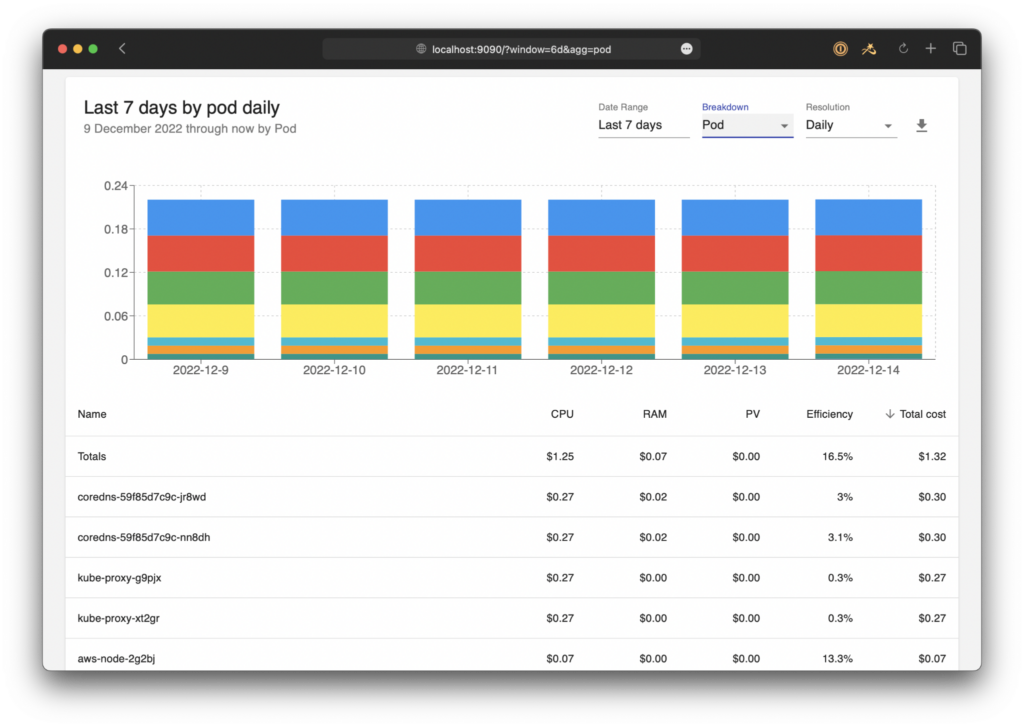
The platform provides detailed cost data collection, analysis, and reporting capabilities, akin to what Kubecost offers but with a focus on being a foundational tool that other applications can build upon. As such, it aims to be the “Prometheus of cloud cost monitoring”.
OpenCost’s functionality includes real-time allocation of costs based on Kubernetes services, deployments, and other constructs, and supports environments ranging from cloud providers like AWS, Azure, and Google Cloud to on-premises deployments.
If you’re looking for an open-source, vendor-neutral solution for Kubernetes cost management that supports a broader range of platforms and customizations to build upon, OpenCost is a great choice. In contrast, if you want out-of-the-box features built and maintained by a dedicated team (as well as customer support), OpenCost might not be the best fit.
#3. Datadog Cloud Cost Management
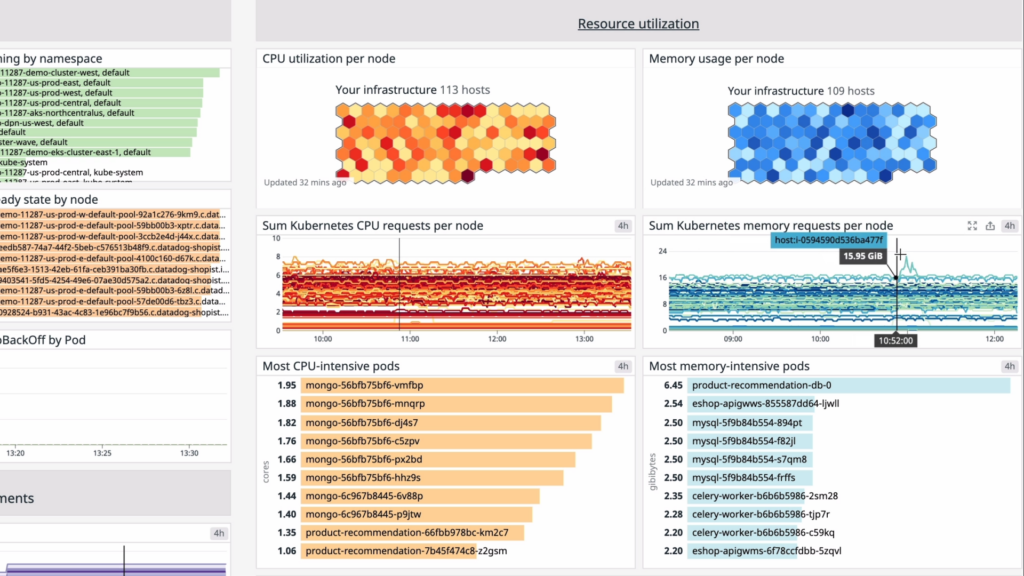
One of the key features of Datadog Cloud Cost Management is its ability to provide detailed insights into resource allocation and utilization. It does this by correlating cost data with operational metrics, such as CPU and memory usage, helping teams identify inefficiencies and optimize spending. For instance, Datadog can highlight underutilized cloud resources that could be downscaled to save costs or pinpoint areas where performance improvements could lead to cost reductions.
In contrast to Kubecost, which focuses more specifically on Kubernetes cost management, Datadog offers a broader range of cost management features that cover multiple cloud platforms and services.
One consideration is that Datadog is commonly considered to be potentially expensive. The pricing model, which is based on per-host and per-service metrics, can quickly scale up as an organization’s infrastructure grows. And, like Kubecost, it includes no automated cost optimization tools for realizing cost savings.
#4. Harness.io
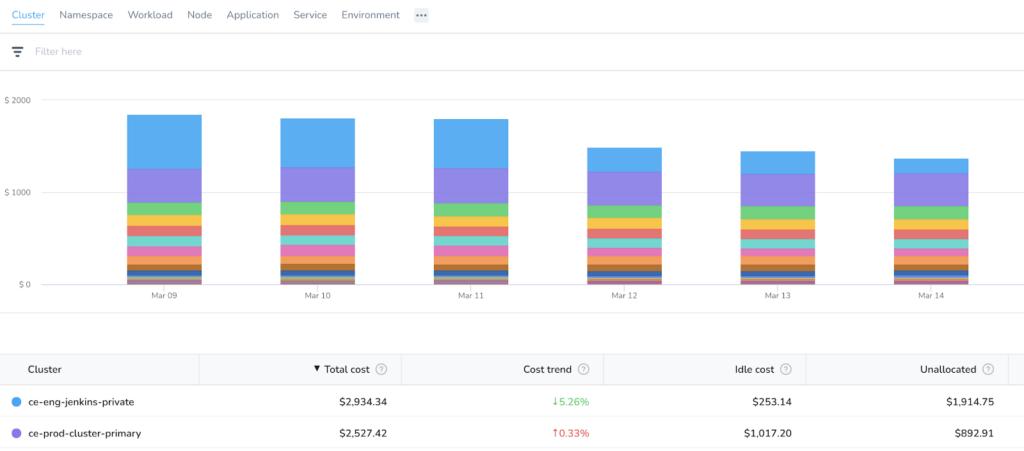
The platform offers real-time visibility into the costs associated with specific deployments or microservices. This allows engineering teams to see the financial impact of their deployment choices instantly.
These features are integrated into a broader suite of DevOps tools and FinOps tools, such as budgeting, alerts, cost allocation, cost optimization recommendations, and anomaly detection.
Compared to Kubecost, which focuses more specifically on Kubernetes and container cost management, Harness envisions cost optimization as part of the entire software delivery pipeline. In complex cloud infrastructure scenarios where organizations are deploying multiple updates daily, Harness.io may be a good fit.
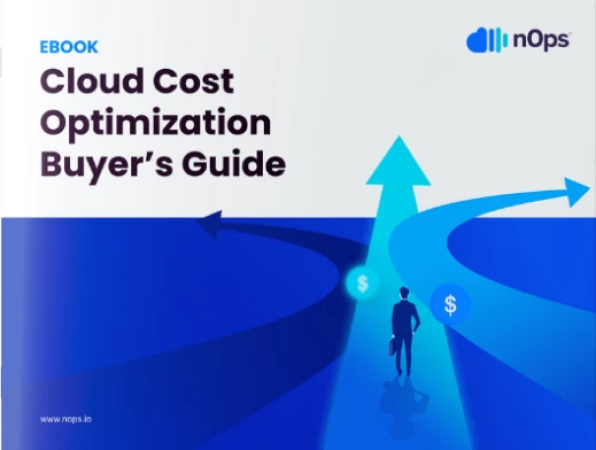
#5. Yotascale
Yotascale offers a cloud cost management solution specifically engineered for dynamic and complex multi-cloud environments. It provides granular insights into cloud spend, attributed down to the team, application, and resource levels.
Among other features, the platform’s key features include automated cost allocation, rightsizing recommendations, cost anomaly detection, as well as cloud budgeting reconciliation and forecasting.
A standout feature of Yotascale’s cloud management solution is its predictive analytics capabilities, which analyze current spending patterns and forecast future expenses. Yotascale’s machine learning algorithms help identify anomalous spending patterns and offer recommendations for cost optimization, which can be critical for maintaining budget control and reducing wastage.
Recently, it announced Yota Copilot, a Gen-AI assistant to help you more easily understand and manage cloud costs.
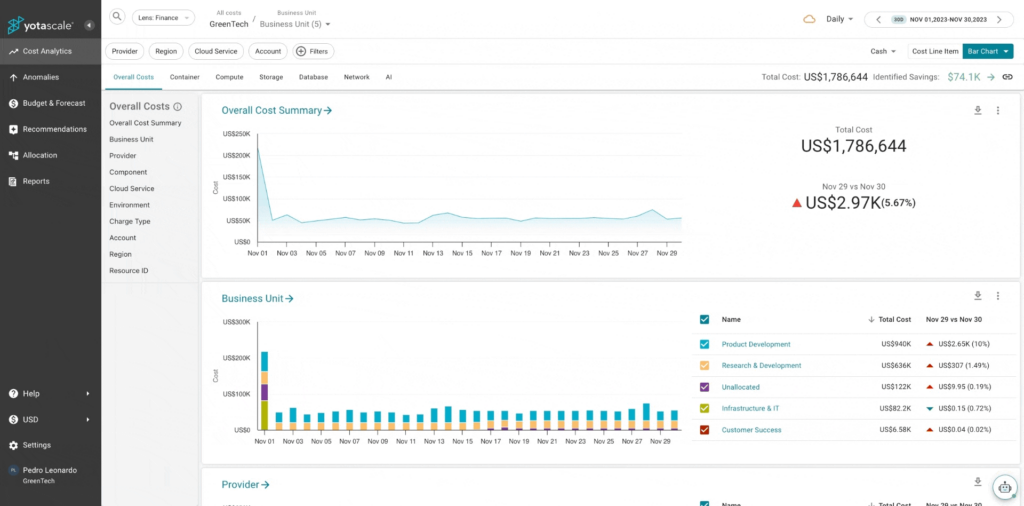
Yotascale also offers collaboration and reporting tools designed to enhance communication between finance, operations, and engineering teams.
Like many other entries on this list, Yotacale is less Kubernetes-focused than Kubecost, which may be an advantage or disadvantage depending on your organization’s specific infrastructure needs.
#6. Apptio Cloudability
Apptio Cloudability is primarily tailored for Finance and FinOps teams, offering robust tools for cost monitoring, allocating, and evaluating public cloud expenditures. The platform is adept at helping teams control cloud spending through budgeting and forecasting features. Users can set budgets for specific contexts and receive alerts if spending approaches or exceeds these thresholds.
Cloudability also offers anomaly detection capabilities, which notify users of cost spikes based on predefined thresholds, and for its ability to generate rightsizing recommendations based on the last 10 to 30 days of data usage. These features assist in creating consistent budgets and baselines for future forecasting.
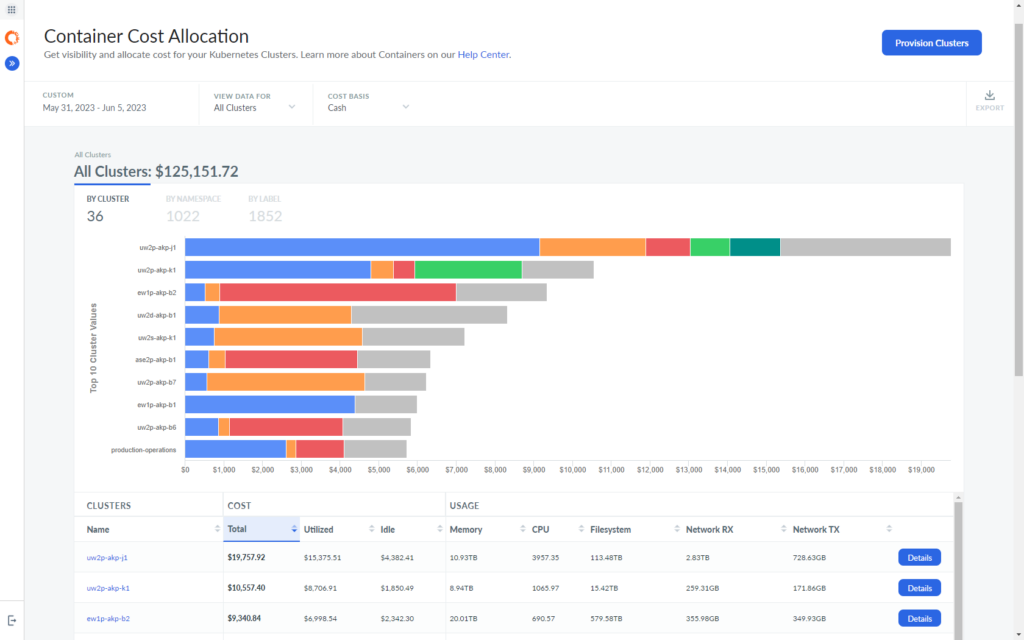
When it comes to Kubernetes costs, Cloudability offers features like container cost allocation so you can understand the costs of your Kubernetes cluster and their underlying resource consumption.
In terms of automation, Cloudability offers some functionalities like scheduling daily cleanups of disconnected EBS volumes and automating the scaling of Auto Scaling Groups (ASGs) or the management of EC2 and RDS instances during low utilization periods.
However, these features are somewhat limited compared to other platforms, potentially restricting its effectiveness in multi-cloud optimization and automation scenarios. And, the platform is often considered to be potentially expensive, with fees increasing quickly as usage scales.
#7. Finout
Finout is a cloud management platform that positions itself as the “Swiss Army Knife” of cloud cost management tools, emphasizing its versatility and comprehensive coverage across multiple cloud platforms and Kubernetes environments.
In contrast to Kubecost, which primarily focuses on Kubernetes cost management, Finout also offers broader capabilities that include detailed support for non-Kubernetes resources. You can use it to manage, allocate and optimize across multiple cloud providers in one unified platform.
One key benefit of the tool is visibility into your Kubernetes clusters. It integrates with your Prometheus DB using its open-source cronjob or with your Datadog account API to provide access to your Kubernetes cluster metrics. Finout offers Kubernetes insights like cost per pod, deployment, namespace, cron job, StatefulSet, and cluster, with dashboards and reporting tools.
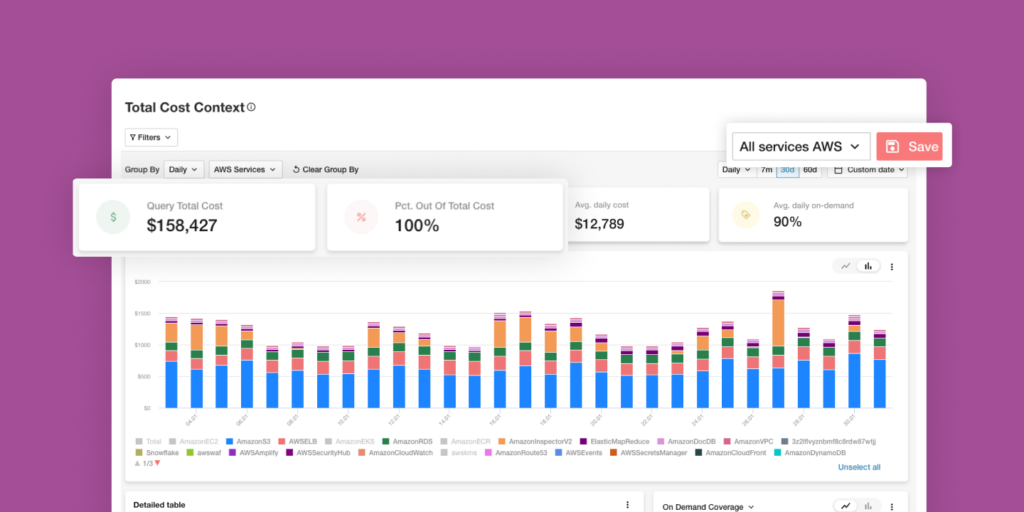
#8. Cast.ai
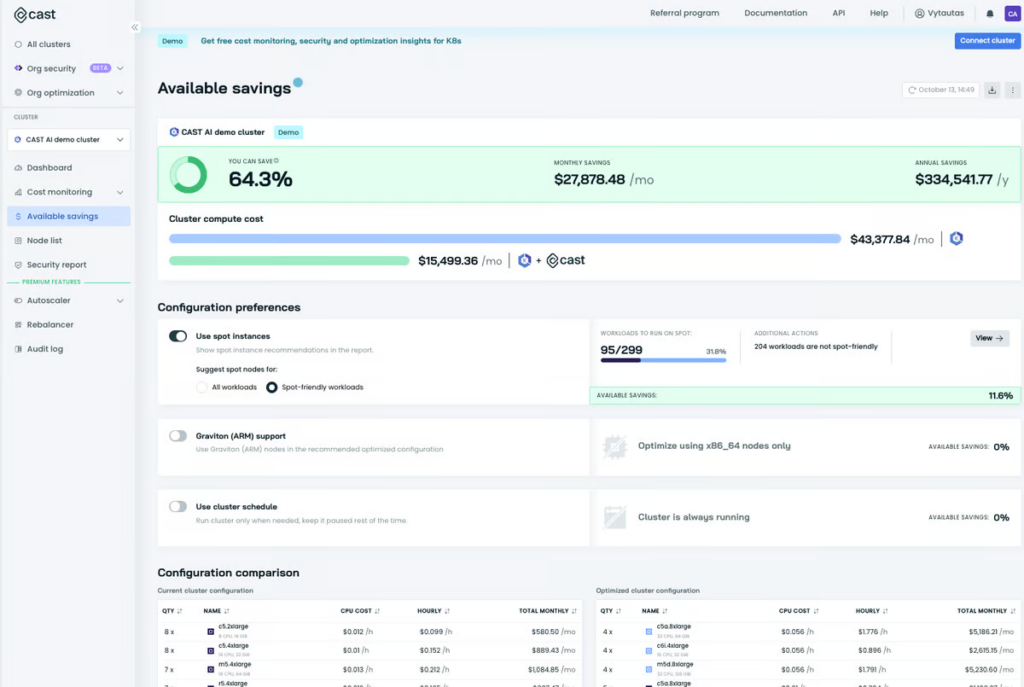
CAST AI helps make adjustments in resource allocation based on workload demands to better optimize cloud costs. It helps dynamically scale resources down during low usage or switch to more cost-effective options automatically.
This platform is particularly effective for Kubernetes deployments across various cloud services such as AWS’s EKS, Azure’s AKS, Google’s GKE, KoPs, and OpenShift. It integrates with these various environments. Additionally, CAST AI offers a security dimension by providing complimentary scans against recognized standards like the CIS benchmark and the NSA-CISA framework, to enhance both cost management and security posture.
Like Kubecost, Cast.ai is only for Kubernetes costs, making it difficult to fully account for costs in the engineering budget and reconcile spending with your full AWS bill.
#9. Anodot
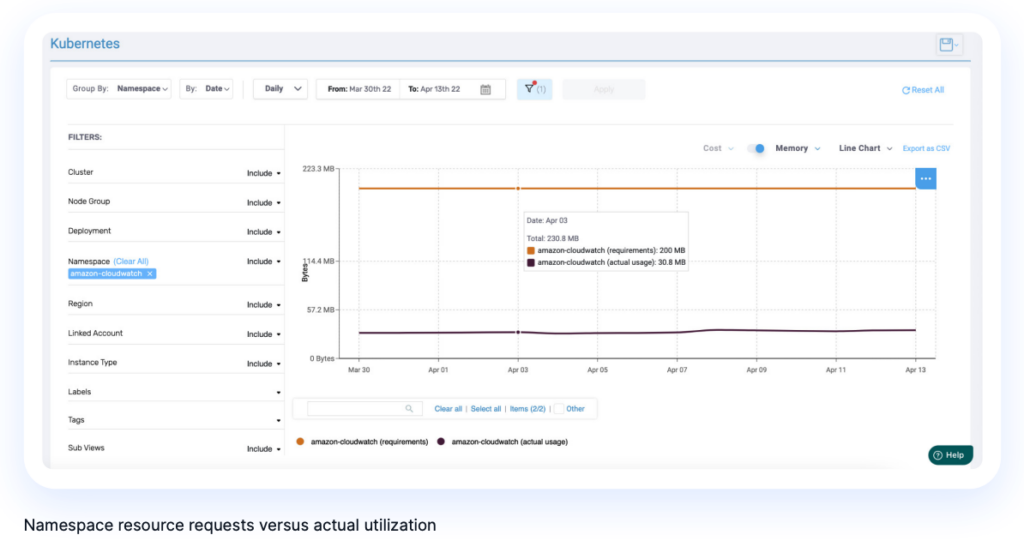
The tool is designed to manage complex multicloud environments effectively. It allows for accurate allocation of shared Kubernetes costs, including compute, storage, data transfer, and waste. Anodot supports various cost allocation models, such as requests, limits, or actual usage, helping teams adapt to the specific financial governance of their projects.
Moreover, Anodot integrates containerized and non-containerized costs, offering a comprehensive view of expenses associated with running Kubernetes applications. This integration aids FinOps teams in establishing robust processes for managing container spending in line with traditional cloud expenses. Automated alerting and detailed reporting capabilities further enable engineering teams to understand and manage the cost implications of their operational choices.
Anodot is particularly useful for cost visibility environments where Kubernetes’ complexity and shared resource usage pose significant challenges in cost allocation and optimization. However, it focuses on visibility more than optimization — meaning that you’ll need to sign up for additional tools in order to act on cloud savings opportunities.
Finding The Right Kubecost Alternative For Kubernetes Cost Optimization
While Kubecost provides robust tools for cost analysis and management within Kubernetes clusters, its also has limitations.
You’ll need another tool for your non-containerized costs. You’ll also need other tools to help automate manual and time-consuming cost optimization efforts, such as workload management, commitment management, cleaning up idle resources, rightsizing, scheduling, etc.
While various Kubecost alternatives cover some of these functions, a comprehensive cloud optimization platform like nOps covers them all. At nOps, our mission is to make it easy and painless for engineers to take action on cloud cost optimization. The all-in-one nOps suite of cloud cost optimization feature set includes:
- Cost allocation: Allocate 100% of your AWS bill down to the container level with automated tagging, showbacks, chargebacks
- Compute Copilot: intelligent workload provisioner that continuously manages, scales, and optimizes your AWS compute for the lowest cost and most stability
- Commitment management: automatic life-cycle management of your EC2/RDS/EKS commitments with risk-free guarantee
- Storage migration: One-Click EBS volume migration
- Rightsizing: rightsize EC2 instances and Auto Scaling Groups
- Resource scheduling: automatically schedule and pause idle resources
- Well Architected Review: automate and streamline your AWS Well-Architected Review, FTR, SOC2, HIPAA or CIS audit
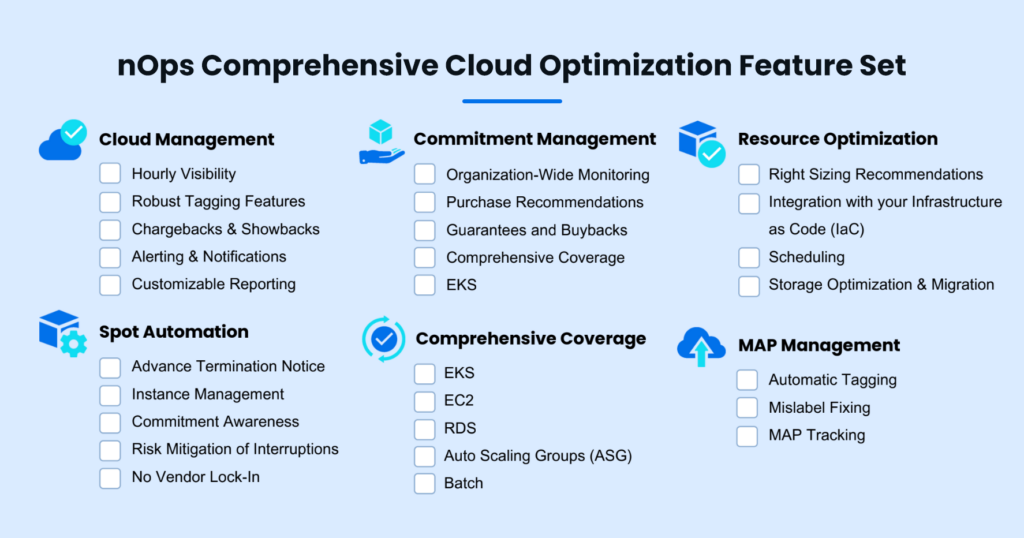
nOps was recently ranked #1 with five stars in G2’s cloud cost management category, and we optimize $1.5 billion in cloud spend for our customers.
Join our customers using nOps to understand your Kubernetes costs and leverage automation with complete confidence by booking a demo today!
